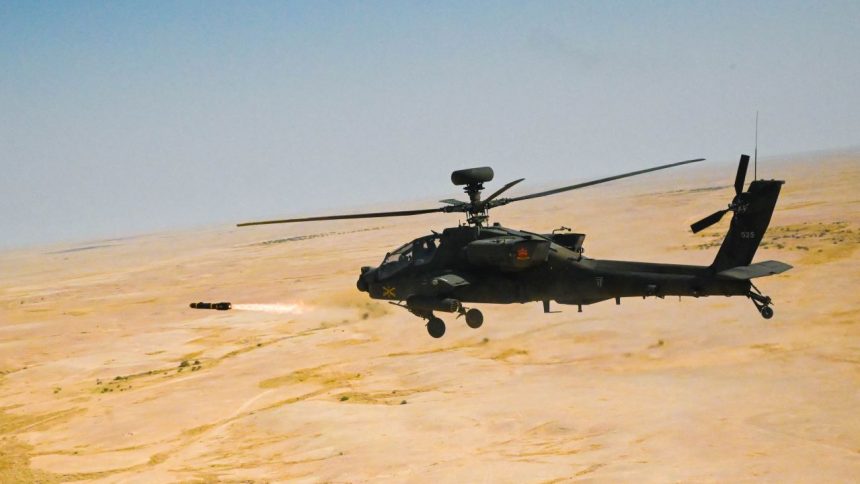U.S. Army awards Lockheed Martin a new contract for JAGM and Hellfire missiles, underscoring the enduring role of these missiles in precision strike missions.
On Aug. 21, 2025, Lockheed Martin secured a new $720 million contract from the U.S. Army for the continued production of AGM-179 Joint Air-to-Ground Missiles (JAGM) and AGM-114 Hellfire missiles. The new award, funding the fourth production year of the multi-year contract, brings the cumulative face value of that deal to approximately $1.493 billion, according to the U.S. Department of Defense.
Interestingly, previous notices about this contract generically mentioned air-to-ground missile systems. This time, the notice explicitly mentions Hellfire and JAGM. Over 145,000 missiles have been produced to date, says the company, demonstrating their enduring role as the weapon of choice in critical, precision engagements.
Distribution & Foreign Military Sales (FMS)
This contract supports not only U.S. Army and Navy requirements, but also includes Foreign Military Sales to a range of international customers. Notably, according to Lockheed Martin, the contract includes 160 JAGMs destined for the United Kingdom, Hellfire orders for NATO allies Poland, Spain, Czech Republic, Italy, and a new international customer, Canada.
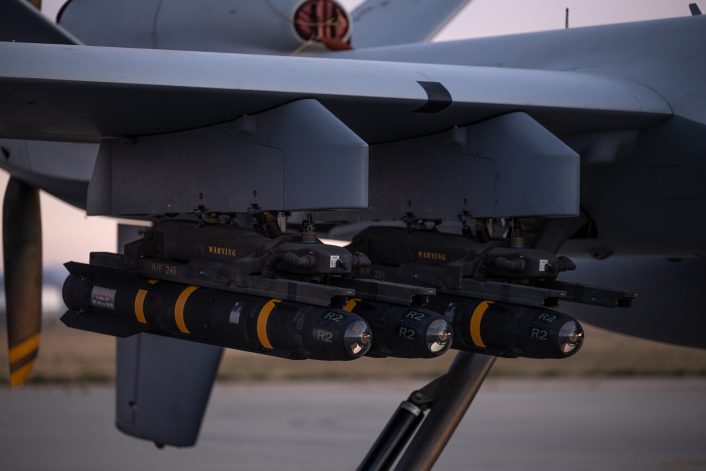
The Polish Hellfire order aligns with previous U.S. FMS agreements for AH-64E Apache helicopters to the Polish Air Force, which are expected to be delivered from 2028. Poland ordered 800 AGM-114R2 to arm its new Apaches, emphasizing the synergy across complementary missile and rotary-wing systems.
The UK has an even larger FMS contract pending, as the U.S. State Department approved an FMS for 3,000 JAGM missiles to the UK. Similarly to Poland, the weapons will equip the British Army’s AH-64Es.
Italy, after years of planning, is arming its MQ-9As with AGM-114 Hellfires, among other weapons, as part of the ongoing modernization. Canada will similarly arm its own recently acquired MQ-9s with Hellfires.
JAGM: Enhanced Guidance and Range
The AGM-179 JAGM is a follow-on to earlier canceled programs but retains the same form factor as the Hellfire, enabling use of common production lines and launch platforms. Its dual-mode seeker combines laser designation with millimeter-wave radar, unlike Hellfire variants that used separate seekers.
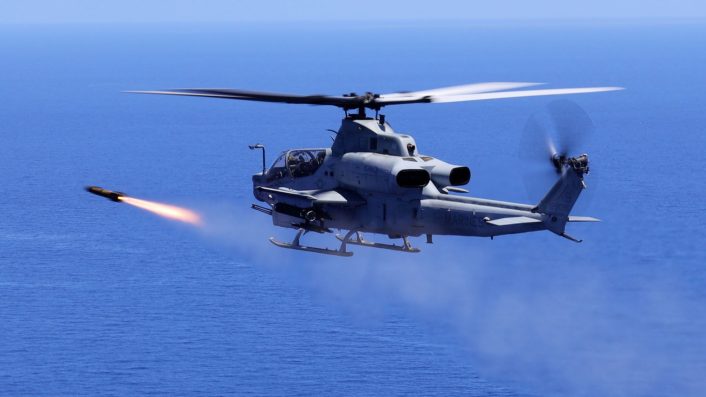
Moreover, Lockheed Martin has developed an improved version, the JAGM-MR (Medium-Range), which doubles the range from approximatively 8 km (5 miles) to about 16 km (10 miles), retaining the original dimensions. Additionally, this version also adds a near-infrared seeker to the existing dual-mode guidance system.
The extension of the range and additional seeker were possible thanks to the introduction of a new rocket motor and an electromechanical control actuation system replacing the previous pneumatic one, which freed more room in the weapon. Tests at China Lake and subsequent demonstrations confirmed the missile’s extended reach and its ability to discriminate multiple targets at range.
The AGM-114 Hellfire
The Hellfire missile started life in 1974 as an air-launched anti-tank missile, entering service in 1984 at the height of the Cold War. Earlier versions were only laser-guided and designed to be employed prevalently by helicopters like the AH-64 Apache attack helicopter.
The upgraded Hellfire II variant entered U.S. service in 1996 and, since then, has been widely used on many platforms, but achieved fame particularly as the weapon of choice for drones like the MQ-1 Predator and MQ-9 Reaper during the years of the War on Terror. American drones and Hellfire missiles were famously involved in the strike that stopped the fleeing convoy of Libyan dictator Muammar Gaddafi, in the strike in Baghdad that targeted the Iranian general Qassem Soleimani and in the elimination of al Qaeda’s leader Ayman al-Zawahiri.
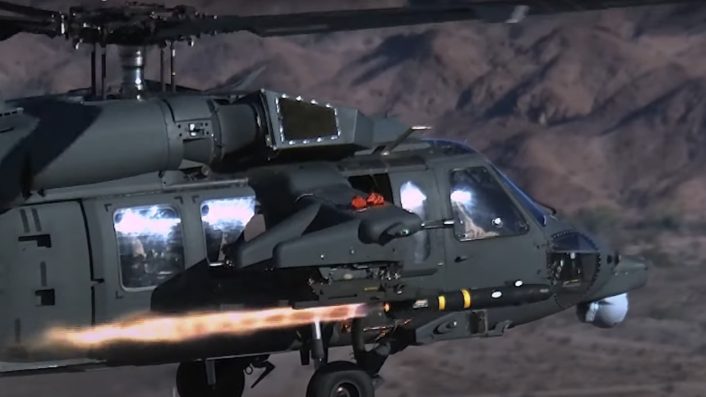
The Hellfire II also has a radar-guided variant, the Longbow Hellfire, equipped with a millimeter-wave active radar, making it a fire-and-forget weapon with even a lock-on after launch capability. The Longbow radar is famously mounted on the top of the rotor of the newer Apache versions, allowing the helicopter to engage enemy targets while behind cover and only exposing the radar on top.
A peculiar Hellfire version is the R-9X variant, sporting a kinetic warhead with six pop-out blades that replace explosives and reduce collateral damage. The R-9X Hellfire, popularly known as “Ninja Missile” and “Flying Ginsu”, was the type used to target Ayman al-Zawahiri in Afghanistan.
The AGM-114 Hellfire, which weighs 104 pounds (47 kg, with 20 pounds or 9kg being the warhead) and has a range of between 7 and 11 km, has also been used in an anti-aircraft role. The first air-to-air operational use was on May 24, 2001, when an Israeli Apache engaged a Cessna 152 intruding from Lebanon.
Hellfire in the Counter-UAS and Naval Roles
Both the AGM-179 JAGM and the AGM-114 Hellfire continue to evolve with significant upgrades and diversified employment across air, land, and naval domains. While the JAGM saw more limited use as it only recently entered service, the Hellfire is now seeing use in new, different roles.
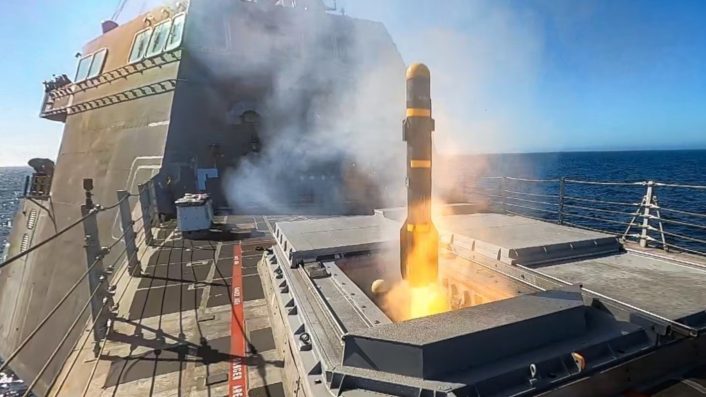
In fact, beyond its traditional role as a precision anti-armor and strike weapon, the AGM-114 Hellfire has increasingly been adapted to counter-unmanned aircraft systems (C-UAS). For instance, during the U.S.-Saudi Red Sands exercise in 2024, AH-64 Apache helicopters successfully used Hellfires to engage and destroy hostile drones, showcasing the missile’s versatility in emerging threat scenarios.
Similarly, the MQ-1C Gray Eagle unmanned aircraft has been tested in the C-UAS role, employing Hellfires to intercept and neutralize aerial drones during live-fire demonstrations. Both tests used the AGM-114L Longbow Hellfire variant, equipped with a millimeter-wave (MMW) radar seeker. The Gray Eagle STOL also employed the Hellfire in a C-UAS test.
The U.S. Navy has also fielded the Hellfire in the surface-to-air role aboard the Littoral Combat Ships (LCS). Integrated into the Surface-to-Surface Missile Module (SSMM), Hellfire missiles give the LCS the ability to rapidly engage small boats, low-flying aircraft, and drones at close range, addressing one of the ship class’s most persistent self-defense gaps.
In recent trials, the LCS successfully intercepted multiple fast-moving aerial targets using Hellfires, highlighting its flexibility as a naval point-defense solution. The new C-UAS system has already been deployed operationally aboard USS Indianapolis in the U.S. 5th Fleet Area of Responsibility.
Moreover, the U.S. Navy mentioned in 2023 its plans to integrate Hellfire and JAGM into the F-35C Lighting II. These will join the AGM-158 Joint Air-to-Surface Standoff Missile (JASSM) and the AGM-158C Long-Range Anti-Ship Missile (LRASM) as the new weapons the service will introduce on the F-35C.
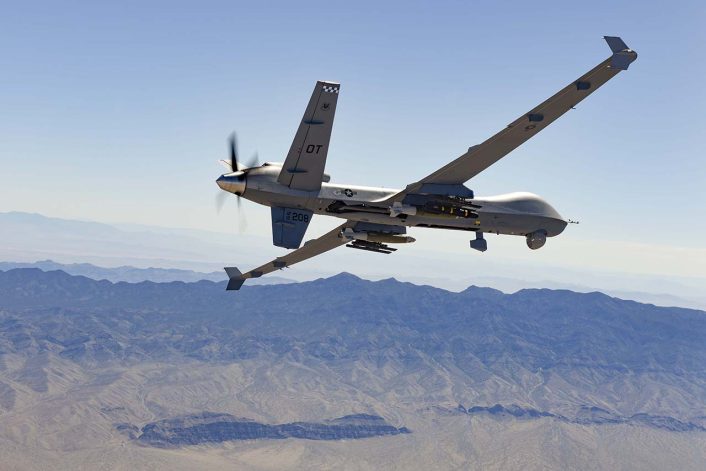
Hellfire Modernization: The SPEAR Warhead
The Hellfire missile family is also undergoing modernization. A new Selectable Precision Effects Articulated (SPEAR) warhead variant enables operators to tailor the munition’s blast pattern, switching between a forward-facing mode for traditional point targets and a radial mode for area effects.
This provides added flexibility against diverse threats, from armored vehicles to dismounted troops in urban terrain. The SPEAR variant is being integrated on platforms such as the MQ-9 Reaper and AC-130J Ghostrider, both of which are heavily used by U.S. Special Operations Command.
The program is part of the Pentagon’s Stand-off Precision Guided Munitions initiative, with additional funding requested in the FY 2026 budget to accelerate fielding. By reducing the need for mixed missile loadouts, SPEAR can enhance mission flexibility while minimizing logistical complexity with less types of weapons.
Strategic Implications
This new contract underscores the integral role of the Hellfire and JAGM missiles in todays evolving threat scenarios. By integrating both close support and extended standoff capabilities, the JAGM-MR enhances survivability of delivery platforms in contested environments.
The Hellfire’s ongoing evolution, particularly with SPEAR and its adaptation to C-UAS and naval defense missions, reflects the responsiveness of the military to evolving threat environments. Even with JAGM initially planned to replace it, the combat proven Hellfire will continue to soldier on for the years to come.

